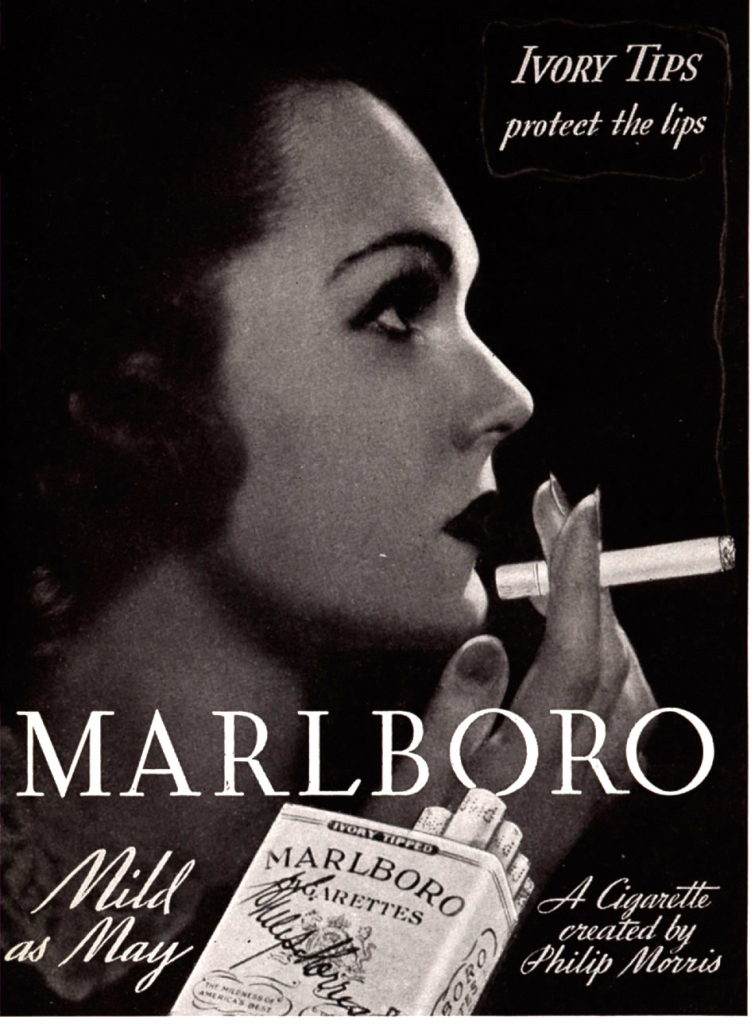Few cigarette brands have a story as compelling as the Marlboro history. Originally launched as a cigarette for women, 万宝路 transformed into a masculine icon, fueled by the rugged imagery of the American cowboy. Over the decades, the Marlboro brand history has come to symbolize strength, freedom, and global dominance in the tobacco industry.

Early Beginnings: A Brand for Sophisticated Women
Marlboro was introduced in 1924 by Philip Morris as a premium cigarette brand. Interestingly, the original target audience wasn’t rugged cowboys but stylish women. With the slogan “Mild As May,” Marlboro was marketed as a refined cigarette with a red band on the filter tip to hide lipstick stains.
However, sales were modest. The brand’s feminine appeal didn’t resonate strongly with broader audiences then, and Marlboro remained a minor player in the market.

Reinvention in the 1950s: The Birth of the Cowboy
Everything changed in the 1950s when growing health concerns around smoking prompted Philip Morris to relaunch Marlboro as a filtered cigarette for men. This was a bold move—filtered cigarettes had previously been viewed as weaker or less masculine.
To shift perception, the company launched one of the most successful advertising campaigns in history: The Marlboro Man.
This rugged cowboy often depicted riding horses across the American West, became a symbol of independence and masculinity. The imagery connected deeply with male smokers, especially during an era when traditional gender roles and rugged individualism were celebrated in media and culture.

The Power of the Marlboro Man
The Marlboro Man campaign, developed by Leo Burnett, ran for decades and became an iconic piece of advertising history. It was more than just a marketing gimmick—it defined the brand.
Key elements of the campaign’s success included:
- Strong, consistent brand identity
- Aspirational imagery of freedom and self-reliance
- Minimal copy, allowing the visuals to tell the story
- Global appeal across different cultures
Despite growing anti-smoking sentiment, the Marlboro Man helped the brand achieve unprecedented loyalty and market share.
Going Global: Expansion and Dominance
By the 1970s and 1980s, Marlboro had gone global. It adapted its branding and marketing strategies to resonate with local markets while maintaining its core identity.
Marlboro became a status symbol in regions like Europe, Asia, and the Middle East. Its sleek packaging and masculine aura appealed to a new generation of smokers eager to emulate Western lifestyles.
Marlboro even sponsored high-profile sporting events, including Formula One racing, further reinforcing its speed, strength, and excitement image.

Adapting to Change: Regulations and New Markets
The 1990s and 2000s brought increasing pressure from governments and health organizations. Marlboro, like other tobacco brands, faced:
- Advertising restrictions
- Health warnings on packaging
- Bans on public smoking
- Lawsuits and taxation
Despite these challenges, Marlboro adapted by focusing on packaging innovation, brand loyalty, and market segmentation. Products like 万宝路金, Marlboro Beyond和 万宝路冰爆 helped appeal to evolving tastes and preferences, especially among younger adult smokers.
Cultural Impact and Controversy
While Marlboro is undeniably successful, it has not been without controversy. The Marlboro Man campaign has been criticized for glamorizing smoking. Several actors who portrayed the cowboy reportedly died from smoking-related illnesses, which anti-smoking groups used to highlight the dangers of tobacco use.
Nevertheless, the cultural legacy of Marlboro remains intact. The cowboy figure still appears in retrospectives, art, and discussions about branding, masculinity, and American identity.
Marlboro Today: A Legacy Brand in a Changing World
As smoking rates decline in many developed countries, Marlboro continues to evolve. Parent company Philip Morris International has focused on “smoke-free future” products, such as heated tobacco systems like IQOS.
Still, traditional Marlboro cigarettes maintain a strong presence in many regions, especially where smoking remains culturally accepted.
Key Takeaways:
- Founded in 1924 as a cigarette for women
- Rebranded in the 1950s with the cowboy image to target men
- Achieved global dominance through iconic advertising and sports sponsorship
- Adapted to modern health regulations with product diversification
- Remains a symbol of American branding excellence and masculinity
最终想法
The story of Marlboro is more than a history of tobacco—it’s a case study in branding, reinvention, and global marketing. From lipstick-proof filters to international dominance, Marlboro’s journey reflects the power of image, emotion, and identity in consumer behavior.
Whether admired or criticized, Marlboro has carved its place in history and remains one of the most recognizable brands in the world.
